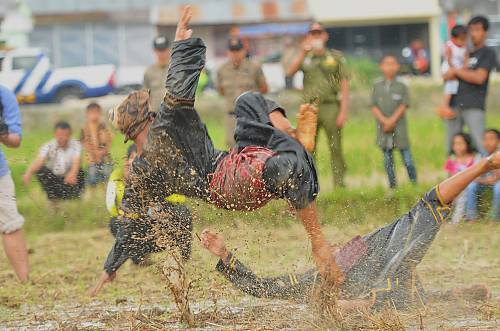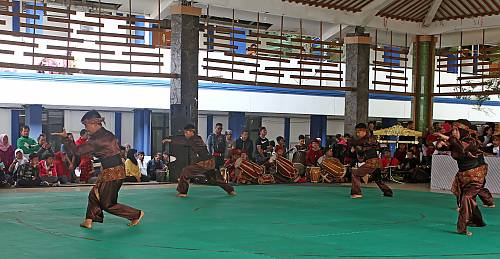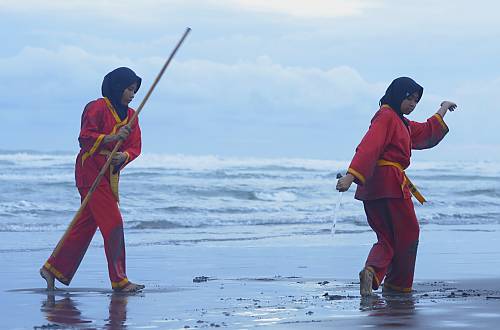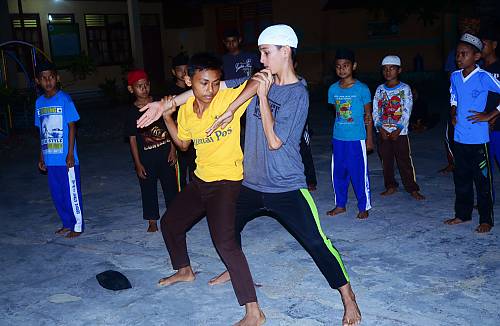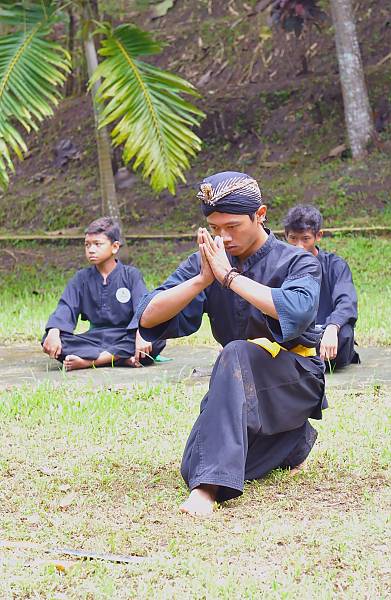Traditions of Pencak Silat
Inscribed in 2019 (14.COM) on the Representative List of the Intangible Cultural Heritage of Humanity
In addition to their sporting element, Traditions of Pencak Silat also encompass mental-spiritual, self-defence and artistic aspects. The moves and styles of Pencak Silat are strongly influenced by various elements of art, involving a unity of body and movement fitting the accompanying music. The term ‘pencak’ is better known in Java, while the term ‘silat’ is better known in West Sumatra, describing a group of martial arts with many similarities. In addition to local terms, each region has its own moves, styles, accompaniments, music, and supporting equipment, which includes costumes, musical instruments, and traditional weapons. Pencak Silat practitioners are taught to maintain their relationship with God, human beings, and nature, and are trained in various techniques to deal with attacks or other dangerous situations based on principles to protect themselves as well as others, avoid harming the offender and build comradeship. The practice strengthens comradeship, maintains social order, and provides entertainment for ritual ceremonies. Related knowledge and skills are commonly taught in non-formal schools and include oral traditions and expressions such as greetings, philosophical phrases, rhymed poems, advice, as well as songs and techniques to play the instruments.

